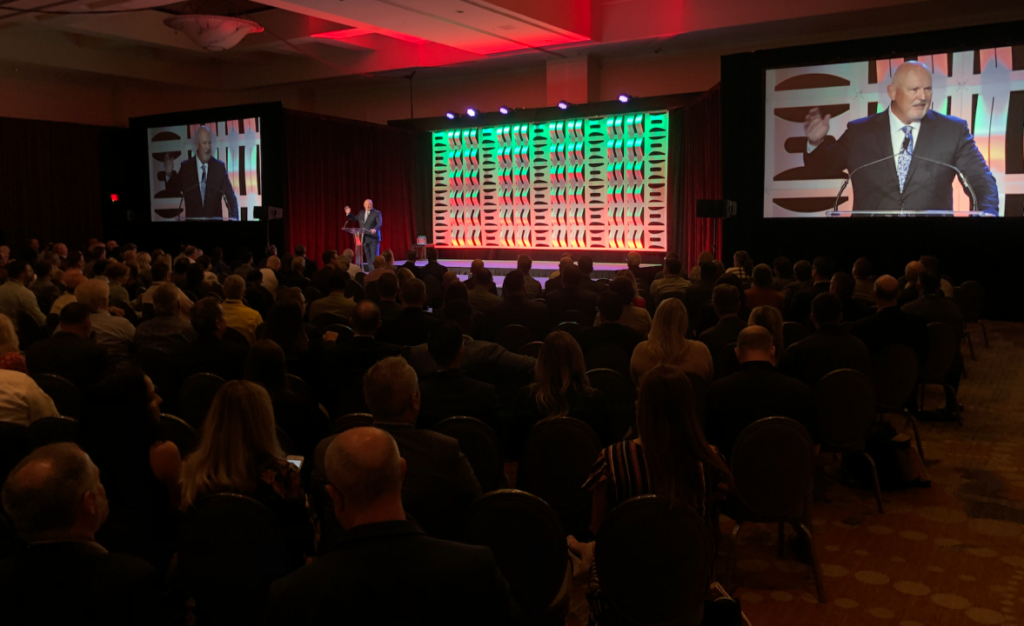Takeaways from the Franchise Leadership and Development Conference
By Thomas Scott, CEO, and Founder, Brand Journalists
As we wind down the 2010s, we stand on the threshold of a new and wildly different era of franchising. The 2019 Franchise Leadership and Development Conference kicked off its 21st year with record attendance and the message for franchise development professionals is mixed.
On one hand, the average age of franchise buyers is getting lower and historically high numbers of buyers are interested in franchising. A robust economy without any looming bubbles is propelling this along with a generational view that entrepreneurship is the career of choice, replacing a job as a career path for millions. Bank lending and a transfer of wealth from parents and older family members are increasing franchise development momentum for many brands.

On the other hand, the future economic growth is showing some signs of decline, the job market is as strong as it has been in a few decades and the sheer number of franchise opportunities has skyrocketed. Fears of an economic decline, helped by tariff negotiations, Brexit and a polarizing political climate have created an atmosphere of uncertainty that franchise systems are feeling.
Feedback from attendees at this year’s conference was that they are seeing much longer sales process times, lower conversion rates, reluctance to fill out applications and a much more hesitant path towards ownership from buyers.
So even though we should be recruiting record numbers of buyers – and the buyers are out there – we’re finding that as an industry, this new era of buyer uncertainty is making an already hard sale even harder.
The brands we work with are seeing some across the board, solid growth this year, much of which is at odds with the conventional wisdom presented at the conference.
Which perspective is right or more importantly, which perspective are you going to choose in the decade ahead?
Here are our important takeaways from this year’s conference:
The Costs of Recruitment are Increasing:
This year, the average advertising cost per sale grew from $8,984 to $10,500, the average cost of a lead grew from $126 last year to $213 this year and the average franchise development advertising budget grew from $189,000 a year or $15,750 a month to $221,000 or $18,416 a month for enough advertising to generate 24 deals. Franchise lead generation and buyer recruitment are not cheap, and it isn’t getting cheaper.
The lesson from this year: there are more buyers and the economy is favorable to franchising but that won’t guarantee sales results. Franchise lead generation and development marketing is fast becoming much more complex and targeted. The era of commodity lead generation where all buyers are equal will fade out with the preceding decade.
Younger Buyers:
This year franchise update increased the font size on our name tags, presumably so the quickly aging franchise exec population can better read the tags. At the same time, the avg age of franchise buyers is dropping and we’re seeing younger buyers than ever. The gap is painfully obvious – buyers want and expect behavior from recruiters and brands when it comes to franchise purchases that we are simply not giving them. For buyer data we have access to from our client base, we’ve seen Millennial buyers (aged 25 to 37) grow from 18 to 32% of buyers. Generation X buyers made up 46%, Baby Boomers made up only 17% of buyers and shockingly, buyers 25 and under made up 5% of our buyers. That’s a first in our experience and it is important.
Younger buyers have radically different attitudes towards franchise ownership and entrepreneurship in general and their Generation X parents are both encouraging and funding franchise purchases. If you struggle or dismiss Millennial buyers, you won’t have a chance with even younger, YouTube generation buyers who expect to have total control over the process and have radically higher expectations for access to detailed information before they talk to you. The next decade is going to change the way we allocate our budgets, the style of websites we build and the skills and technology our recruiters need to be effective.
Your Recruitment Website is already outdated:
We’re just ending the decade you could aptly call the ‘era of self-directed research.’ The dedicated and separate franchise recruitment website became necessary in the past decade and it has evolved to a critical element today. Going forward, recruitment websites are evolving even more and expect your investment in how you tell prospects your brand story to increase.
This year, companies participating in the lead generation survey reported they spent more on recruitment websites and that it now totals 15% a year of the total budget, or about $30,000 a year. Next-generation websites – like the ones were designing and building for clients – are more substantial. They include more video production, have persona-focused funnels dedicated to specific buyer types and transform differently for Facebook and LinkedIn visitors than they do for Google or traditional users. Getting in front of buyers is hard and getting harder – a well thought out and high-performance recruitment website can make the difference in hitting your goals or having to rethink your plan. Expect the investment in website creation – which includes content, video and other types of storytelling – to become a larger and more regular part of your budget. Without it, you might not fare well in other channels like PR, trade shows and consumer traffic.
The days of being able to call leads are getting shorter:
Think about the phone call – our entire approach as an industry towards how we communicate with prospects is based on the phone. What would happen if you weren’t able to call your leads? How would you communicate with them and have conversations?
Apple, ATT&T and other phone carriers are already blocking sales calls, labeling them as ‘telemarketers’ or ‘spam’ calls. Apple recently rolled out a new feature that sends any number not in your contacts or email automatically into your voicemail, so you won’t be bothered by salespeople calling you. We’re hyper-focused on the phone call as the measurement on lead quality but what if that ceases to become a viable way to reach prospects in the decade ahead?
Texting, thanks to companies like FranFunnel, is helping break this barrier down. For our sales clients, we auto text all leads, and it results in an average 28% contact rate before we make the first call. Auto texting is just the beginning. The future might involve Facebook messenger, push notifications, text-based lead nurturing campaigns and a variety of other non-phone call tactics.
CRM Technology is outdated:
Ok, 2003 called and wants its CRM back. Seriously, I love working on franchise-industry CRM systems and our clients use both Emax and Franconnect. Unfortunately, what recruiters and sales managers need today is far beyond what these systems deliver. There is a gap between the way we need to communicate and interact with prospects and the way a prospect wants to communicate with us.
Switching screens on a laptop are not hard, try juggling those on a phone. For that matter, have you tried to fill out an application on a phone? Look at a spreadsheet on a phone? We are anchored down by our reliance on outdated CRM technology which was designed to work on desktops. Change #1 would be to move everything to an app so that a salesperson could do 100% of their work using just a smartphone. My coffee café franchises, Just Love Coffee, use TOAST as a POS system and as a multi-unit owner, I can run my entire operation from my phone. If something that complicated can be done through a phone, why can’t a simple sales pipeline and candidate management be done easily.
Talk at the conference centered on the shortcomings – not enough texting and lead nurturing functions, difficult reporting, and way-outdated user interfaces. If CRMs are simpler to use, salespeople will use them! Our industry is ripe for a disrupter to change the way we think about CRM systems.
The Sales Process is changing:
A big point several presenters made was simply that if you are still using a ridged sales process, you are probably costing your company deals. The takeaway this year was that there are as many different paths through a sales process as there are buyers and everyone has a unique buying process.
Applications moving back in the process and becoming much more streamlined. Applications cause trust issues and forcing them too early just costs deals. It is clear that forcing them too early also doesn’t improve the quality of buyers. It’s a lose-lose.
The best idea we heard: ask prospects in the first call simply how they want to research and buy a franchise; what is the process they have in mind and what important pieces of information do they want to learn? Most buyers can answer this question and will be able to tell you what they want. Simply give them what they want, and you will be far ahead of most recruiters.
Be flexible and try to help every prospect gather the information they need to make a good decision. Sticking to an overly rigid process just frustrates buyers and they go away.
A culture of growth is needed:
If the 2010s were the engagement age, we’re going to name the 2020s the transparency age. New buyers in the upcoming decade will have much higher expectations for transparency at all levels. The most important area where they want more transparency: access to actual franchisees.
They want to verify and validate that these owners are both profitable and happy, with happy being slightly more important for younger buyers than positive economics. If you have unhappy franchisees – unhappy because you are running a strict compliance culture and you haven’t involved franchisees in the development of your systems or given them an equal seat in the decisions that affect them – you won’t grow as fast as a company that understands this.
Tropical smoothie doubled from 400 to 800 units in the past few years by giving its franchise owners a seat at the table and worked collaboratively with them to develop systems. It is a very franchisee-centric culture with development committees both coming up with systems, weighing on decisions and giving key feedback, including killing poorly thought out ideas. This is the new normal – franchise systems are not democracies, but the franchise owners need to feel like it is. Nothing frustrates franchise owners more than ivory tower, command and control behavior on the part of a franchisor. Build a culture of growth – foster a collaborative culture and invest in training them to serve franchisees. Buyers can smell the difference when they do research, and this is going to be more important going forward!
Facebook advertising is essential today:
Facebook matters. Are you spending money on Facebook ads? If you are not, you should be. The focus this year was on how to get a better result while spending less. For our buyers in 2019, 21% came from Facebook, up from 4% last year. Google AdWords, long hailed as both the highest quality and most expensive lead source.
Here’s the deal: the average target franchise buyer spends 2.2 HOURS a day on social media, mostly on Facebook and its related platform, Instagram. 2.2 Hours!!! The same target buyer spends a paltry 23 minutes on the ‘internet’ – and only a small portion of that on a search engine. The takeaway is simply that you need to advertise where your buyers are and in today’s market, they are on Facebook.
If you didn’t get results, you are not doing something right. Buyers are on Facebook and you can generate deals from Facebook if you stick with it. Keys to success for adverting on Facebook got as specific as you can with targeting; this is where most companies miss the mark. Change your ad creative out often – the cost of creative production and design should cost more than your actual ad spend because Facebook ads get fatigued quickly. Train your salespeople to work these leads and use autoresponder text or messenger systems to communicate with these people. Just because they don’t want to jump on a phone call does not mean they are not buyers.
Segmentation and Persona Marketing:
the days of monolithic buyers are fading away – the next generation of franchise lead generation is much more targeted and contextual to the type of buyer you want to recruit.
Do you know who your best buyers are? How do they each view your value proposition? Do you have content and a website tailored to the conversation they want to have with you? The next level is going to be focused on targeting more specific buyers and thinking through how they view your brand, what the emotional triggers are and what cost-effective ways can you get your relevant messages in front of them.
This type of marketing requires a higher investment in website content and more sophistication in marketing ability but offers to help you recruit better performing owners in an era when your competition is struggling.
The decade ahead is promising – although there is some uncertainty, we don’t have any looming bubbles about to burst and our economy looks strong. Younger buyers are entering franchise systems as owners and brands that can adapt and stay relevant will thrive.
What were your takeaways from the 2019 FLDC?
About Brand Journalists
Brand Journalists uses a specialized team of former newspaper writers and video journalists, matched with some of the best designers and SEO / PPC / SEM practitioners in the country, to produce high-performance recruitment websites and franchise lead generation campaigns that far exceed industry norms. We’ve grown over 175 franchise brands and helped development teams recruit over 10,000 new franchise owners since our inception in 2008. We’re based in Nashville, TN.

